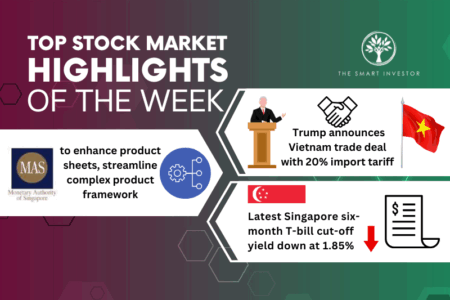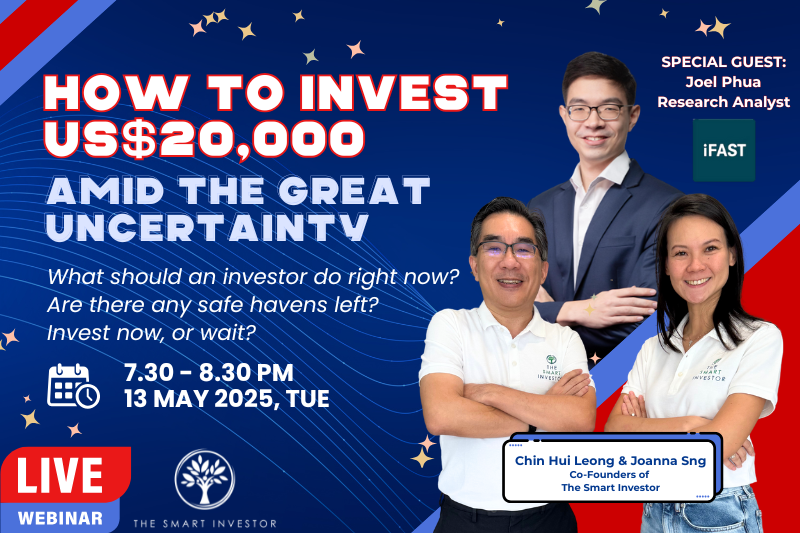Everyone loves receiving dividends.
Many companies, such as Haw Par Corporation Ltd (SGX: H02) and Singapore Technologies Engineering Ltd (SGX: S63), have been paying out a regular, steady dividend for many years.
Others, such as retail and industrial REITs, have even increased their dividends over time.
However, investors need to be aware that the level of dividend paid out is a product of how well the business is performing.
Simply put, if the business does well, the dividends it pays out can be expected to either increase or stay the same.
When the business falters, management may also decide to cut or eliminate the dividend to conserve cash.
Unlike coupon payments for bonds, dividends are not a contractual obligation for the company.
Therefore, investors should expect that dividends may fluctuate from time to time, depending on the economic situation as well as business performance and prospects.
With that in mind, here are three warning signs that you should take note of that may indicate that a company is about to cut its dividends.
A decline in net profits or incurrence of a loss
Many companies have a dividend policy that states that a certain percentage of profit will be paid out as a dividend.
This percentage, called the “payout ratio”, usually hovers between 40% to 60% depending on how much cash the business needs to retain for growth.
For companies such as United Overseas Bank Limited (SGX: U11), it paid out 50% of its net profit for the fiscal year 2019.
If profits are at risk of falling, dividends could correspondingly decline as well, assuming the payout ratio stays the same.
Because of the COVID-19 pandemic, many companies have experienced plunging sales and net profit.
As a result, numerous companies have slashed their dividends in line with this sharp decline.
Businesses that have reported a loss (as compared to a profit a year ago) are also unable to pay out a dividend as it has no profits from which to declare them from.
A recent example was Singapore Airlines Limited (SGX: C6L).
The national carrier reported a full fiscal year 2020 net loss of S$212 million, a sharp reversal from the S$682.7 million net profit a year ago.
No final dividend was declared by the group, as compared to a final dividend of S$0.22 declared in the prior fiscal year.
Negative free cash flow
A business needs to generate consistent free cash flow to sustain its dividend payments.
Although profits are a welcome sight, it is cold, hard cash that pays the bills and for investors, dividends.
Free cash flow is computed by taking operating cash flow and deducting it from the capital expenditures incurred to maintain and run the business.
Companies that routinely pay a dividend, such as Haw Par and Boustead Singapore Limited (SGX: F9D), have a history of generating consistent annual free cash flow.
Investors need to be alert for signs of negative free cash flow, as it may imply that the business has trouble keeping up with its dividend payments.
Reasons could include a fall in net profit due to a worsening of business conditions (resulting in negative operating cash flow), a heavy reliance on bank loans to fund the business, or a sharp increase in capital expenditures needed to maintain the same level of business activity.
Any of these red flags is worth investigating as it may result in persistent negative free cash flow. This could be a prelude to future dividend reductions.
Pay-out ratio exceeds 100%
The reason pay-out ratios usually hover between the 40% to 60% region is that most companies are not willing to pay out a substantial portion of their earnings.
A portion of a company’s profits needs to be retained for reinvestment to grow the business.
If a company does end up paying out more than 100% of its net profit, there are two options it can take.
One is to dip into its cash reserves to “top up” the amount of dividend that exceeds net profit.
The other, simpler option is to simply reduce the dividend to a more sustainable level.
StarHub Ltd (SGX: CC3) used to pay out an annual dividend of S$0.16 in FY 2017, but its earnings per share (EPS) had declined that year to S$0.155.
Its pay-out ratio for that fiscal year amounted to around 103%, which was not sustainable.
By FY 2019, StarHub’s EPS had fallen to S$0.103.
Following this, the telco then slashed its annual dividend from S$0.16 to S$0.09, dropping the pay-out ratio to below the 100% level.
With share prices battered to multi-year lows, many attractive investment opportunities have emerged. In a special FREE report, we show you 3 stocks that we think will be suitable for our portfolio. Simply click here to scoop up your FREE copy… before the next stock market rally.
Click here to like and follow us on Facebook and here for our Telegram group.
Disclaimer: Royston Yang owns shares in Boustead Singapore Limited.




